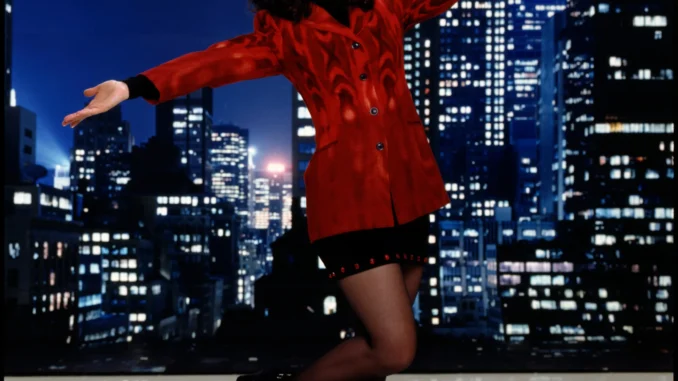
Every insomniac has her own late-night Internet-browsing routine. Mine begins with IMDb, where I like to click on the names of character actors and peruse their upcoming projects. (Weirdly soothing to know that Cloris Leachman has a lot going on!) Then I move on to nail-art blogs, where women post pictures of their manicures, featuring the season’s new colors. And, finally, I visit Net-a-Porter, to browse new clothing items that I will never be able to afford, adding thousand-dollar midiskirts to my online cart and then quietly deleting them the next day.
If you stare long enough at designer clothing in the wee hours of the morning, strange patterns begin to emerge. A few weeks ago, I began to notice that many of the Fall 2018 styles had something in common: they looked like things that Fran Drescher would have worn in the nineties CBS sitcom “The Nanny.” There are tight, leopard-print trenchcoats from Victoria Beckham and fuzzy, neon-green cropped sweaters from Balenciaga. We11Done has a line of zebra-print micro-miniskirts, while Balmain is selling nip-waist patent-leather blazers with trapezoidal shoulder pads. Rosetta Getty and Roland Mouret are both pushing skin-tight pencil skirts in glazed black leather. All these items could have been plucked straight from the closet of Drescher’s Fran Fine—the Jewish-American cosmetics salesgirl from Flushing, Queens, who, through a series of lucky breaks, becomes the nanny to the children of Maxwell Sheffield, a wealthy British widower in Manhattan.
The return of “Nanny”-wear is part of a larger cloud of nineties nostalgia that seems to have enveloped the fashion world in recent years. In February, the famous yellow plaid that Alicia Silverstone wore as the Beverly Hills princess Cher Horowitz in “Clueless” appeared on the Versace runway. Fast-fashion stores like Forever 21 and H&M are now full of crushed velvet, small round sunglasses, combat boots, and lace choker necklaces. A lot of these recycled trends seem designed to recapture nineties youth culture—the teen-agers of today don’t look much different from those who graced the pages of Delia’s catalogues in 1995. But the resurgence of Fran Fine’s style is something different, a shorthand for a brash kind of femininity that commands respect without ever quite fitting in.
From its inception, “The Nanny” was a show about class. Fran Fine, with her Skittles-colored couture, unruly bouffant, and honking voice, is supposed to read as baseborn. She is a shopaholic striver with a mountain of credit-card debt, a profligate clotheshorse who, the viewer assumes, cares more about materialist trends than timeless art. (The show often pits Fran’s fashion obsession against the theatrical ambitions of her boss, a Broadway producer who is engaged in an endless rivalry with Andrew Lloyd Webber.) But much of the show’s humor comes from subverting the viewer’s assumptions. Fran outsmarts people (namely, Mr. Sheffield’s conniving, Waspy business partner, C. C. Babcock). She dispenses wisdom, such as suggesting that the privileged children in her care might benefit, as she did, from a summer farming on a kibbutz. By the end of the series, she marries Mr. Sheffield, completing her trajectory as an outer-borough Eliza Doolittle. But, unlike Eliza’s, Fran’s taste doesn’t change. She never graduates to the muted cashmeres and neutral tones of an Upper East Side blue blood. She goes on wearing bold prints, short skirts, marabou, brocade, and leopard everything.
For the past two years, Shanae Brown, a twenty-eight-year-old hospital technician in Atlanta, has run an Instagram account called “What Fran Wore,” dedicated to cataloguing Drescher’s looks on “The Nanny.” Brown told me that the account is especially popular among young people, even though many of them “were not even born when the show was originally on the air.” The project originated when Brown started watching reruns of the series (which, vexingly, remains unavailable to stream). “That’s when I realized, Oh, my God, her outfits are really dope,” she said. She started taking screenshots, cross-referencing the images on Google and matching Drescher’s outfits with the designers who made the clothing—Moschino, Todd Oldham, Isaac Mizrahi—then posting the stills along with information about each look. Brown does not dress like Fran. (“I’m way more into athleisure wear,” she said. “I can admire her sequins, but it’s not my everyday style.”) But she has recently noticed homages to the look on celebrities like Cardi B—the black-and-white checkerboard blazer that the rapper wore on her recent album cover, she added, “is absolutely something Fran would wear.”
